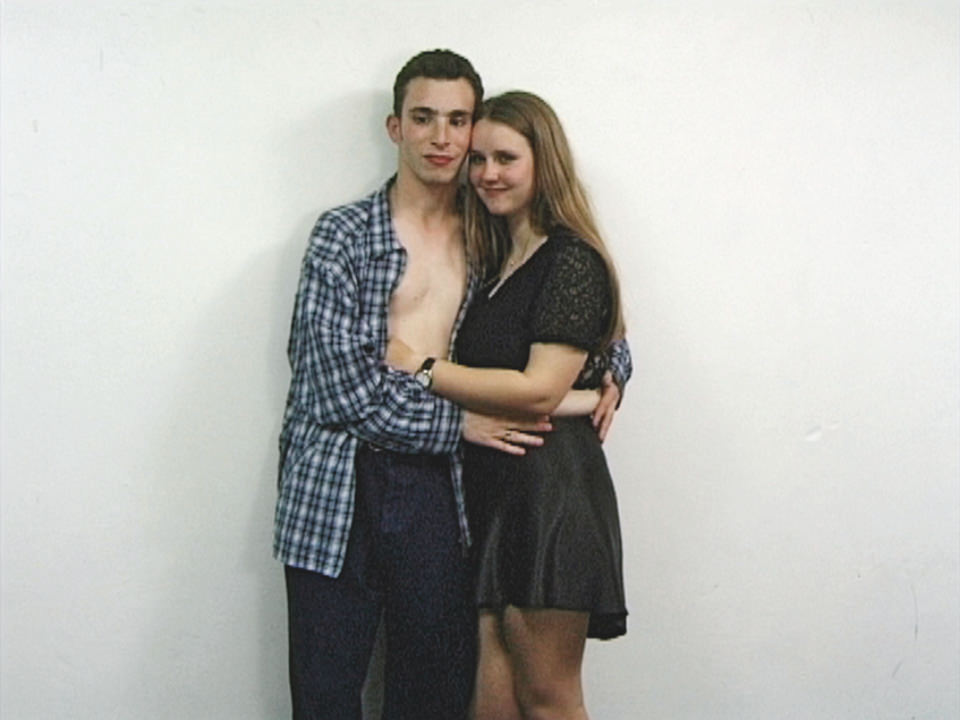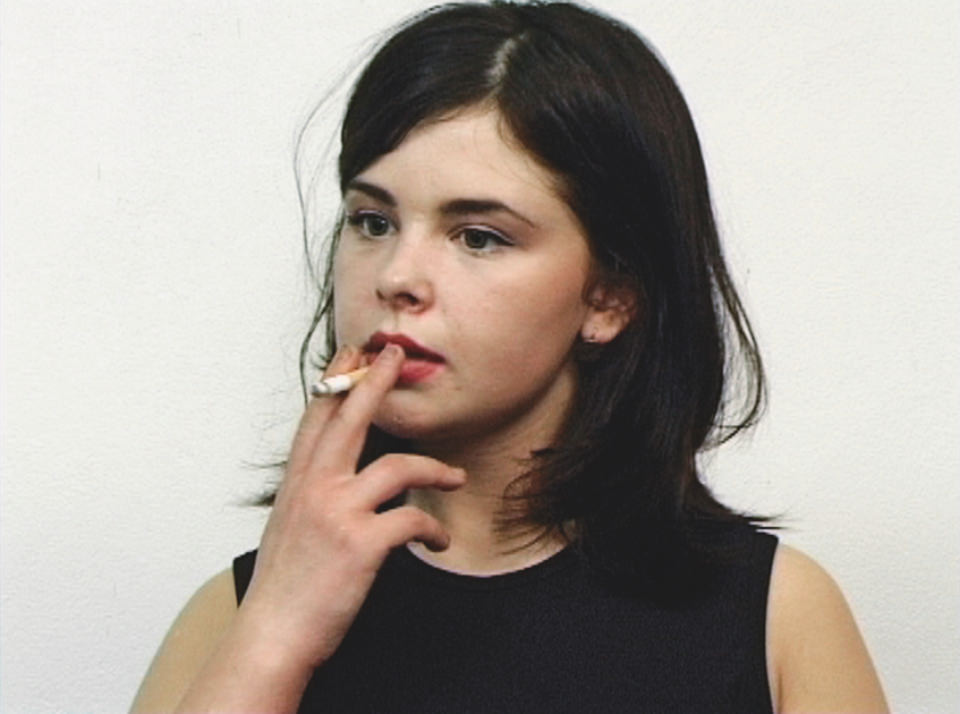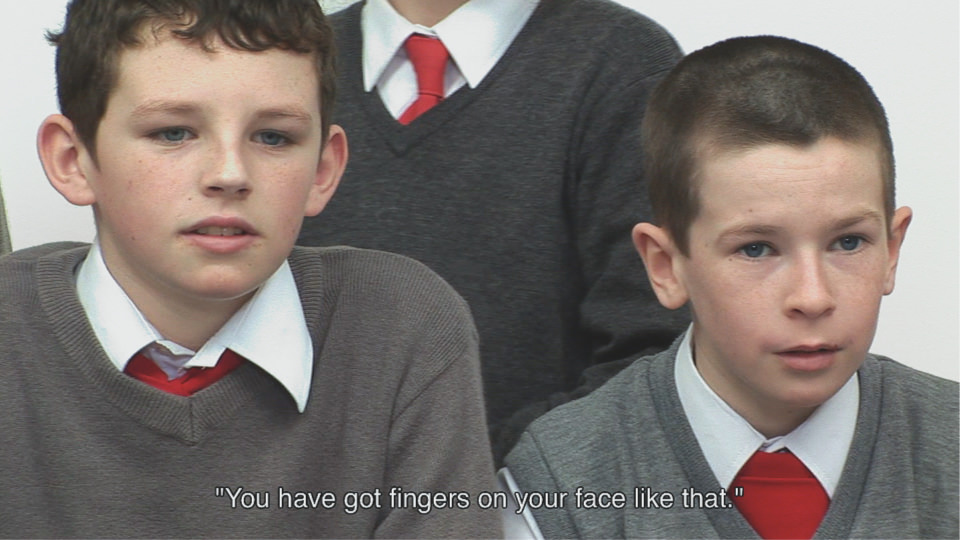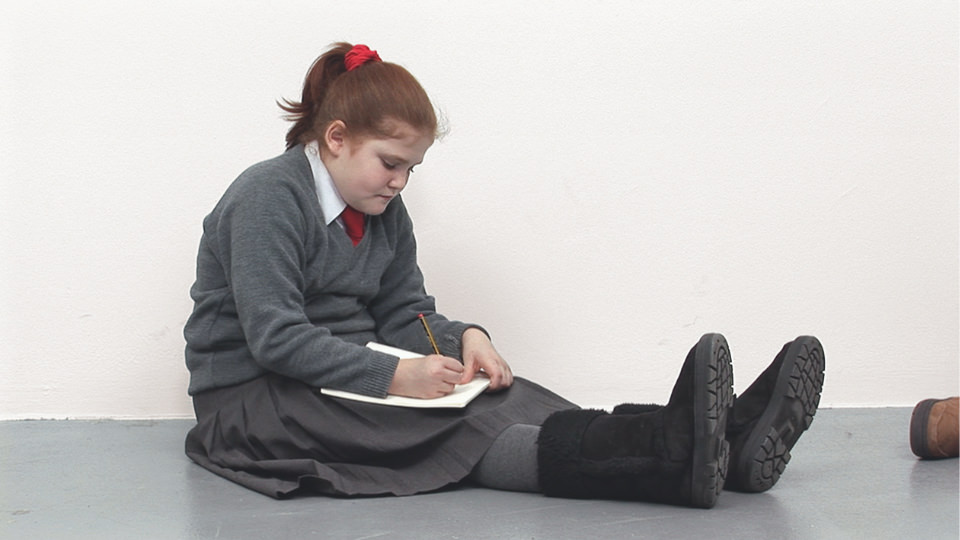Sasha and Marianna, Kingisepp, Russia November 2, 2014 © Rineke Dijkstra
Sasha and Marianna, Kingisepp, Russia November 2, 2014 © Rineke Dijkstra
Dutch photographer Rineke Dijkstra has given us numerous masterpieces in the field of portrait photography.
Although best known for her portraits of adolescent youth
— such as her landmark Beach Portraits series taken on different beaches around the world, she has many important video works in her portfolio as well.
Rineke Dijkstra traveled to Japan to judge the 2019 edition of the New Cosmos of Photography.
Taking advantage of this occasion, we spoke to her about her interest as an artist in tracing the themes of self-consciousness and identity as well as about how she decides on which medium and production techniques to use.
It really depends on what I want to express in the subject. What's fascinates me about video is the ability to incorporate spoken words, music, and sound in the work. This kind of information doesn't exist in still images, and you can say sound and movement are elements that broadens a work's possibilities.


Videostill from The Krazyhouse (Megan, Simon, Nicky, Philip, Dee), Liverpool, UK, 2009
Four-channel video installation, with sound, 32 min., looped © Rineke Dijkstra

Videostill from The Krazyhouse (Megan, Simon, Nicky, Philip, Dee), Liverpool, UK, 2009
Four-channel video installation, with sound, 32 min., looped © Rineke Dijkstra
In 1995, I went to Liverpool - A small city in England with a renowned music scene (the Beatles!) to photograph young people in danceclubs. I wanted to isolate them from the background of the club, so I build a small improvised studio in the back of the club. A year later I went back and made a switch to video.
Especially the girls in Liverpool dress themselves up when they go out. It is part of their culture. I was there in November, it was snowing and outside the clubs there were long lines of girls waiting, wearing only skimmy dresses.
Looking at the contact sheets of the photographs after a little time had passed, I couldn't find a trace of what made the atmosphere in the club so special. I thought in part this had to do with the absence of movement and sound. A year later I went back with a small semi professional video camera. Continuous lights took place of flashes, but apart from that, the setup and also the approach remained the same as it was with the photographs.
They aren't doing much though; just small activities; smoking sigarettes, drinking beer, moving to the music or dancing. Anything goes, as long as it looks natural. It was these small maneuvers I had seen them doing on the dance floor or at the bar that I wanted to reconstruct without having it become playacting.

Videostill from The Buzz Club, Liverpool, UK / Mystery World, Zaandam, NL, 1996 - 97 Two-channel video installation, with sound, 26 min. 40 sec., looped © Rineke Dijkstra

Videostill from The Buzz Club, Liverpool, UK / Mystery World, Zaandam, NL, 1996 - 97 Two-channel video installation, with sound, 26 min. 40 sec., looped © Rineke Dijkstra






Videostill from I see a Woman Crying, 2009
three channel video installation, with sound, 12. min., looped © Rineke Dijkstra
In this video-installation, for the first time, I introduced spoken word. A group of 10 schoolchildren are discussing the famous painting of Picasso. I've always been interested in how people respond differently to a piece of art.
For the video, I recorded the schoolchildren answering questions and speaking about the painting. For example, I'd ask: “What do you think the woman in the painting is feeling?” or “What do you think what happened to her?” That stimulated the children to talk about all kinds of scenarios. They were so interesting and creative. For example, the children spoke a lot about a weddings and funerals, which surprised me. Later I understood that this was because the woman in the painting was wearing a hat, and women in the U.K. customarily wear hats when going to a wedding or funeral. Some pupils gave a funny comments, like: “Maybe she went to a wedding, but she stole the wedding cake, but later she regretted what she has done.” Another girl seemed to project herself onto the painting: “Maybe she's just lonely.” The group consisted of all kinds of personalities, showing such varied reactions while looking at the same painting. In other words, the video is also a portrait of these schoolchildren.
Sometimes I use a Canon digital SLR, but for my photography, I still work analog with a Japanese 4 x 5 inch view camera.
What I like about the 4 x 5 camera is its very simple construction. When you look through the camera through the viewfinder, you see the scene upside down, which helps me to concentrate on the composition.
With a digital camera, it's easier to shoot and you can easily take hundreds of shots. But I prefer to concentrate and shoot purposefully. As I attach the view camera to the tripod, the subjects realize it will take some time to take the photograph. That can also be seen as an advantage [laughs]

Ruth Drawing Picasso, 2009
single channel video installation, with sound, 6 min.33 sec, looped © Rineke Dijkstra
Curiosity is the most important thing when selecting subjects or themes. The more you are interested in the other person, the deeper you want to dig and get to know that person. I also like to immerse myself in a project and take as much time as possible to consider, the possibilities through out the project. My interest is in how to capture the dynamics and the complexity of my subjects and how people distinguish from each other.

Almerisa, Asylumseekerscenter Leiden, the Netherlands, March 14, 1994 © Rineke Dijkstra

Almerisa, Zoetermeer, the Netherlands, June 19, 2008 © Rineke Dijkstra
Since the early 1990s, Rineke Dijkstra has produced a complex body of photographic and video work, offering a contemporary take on the genre of portraiture. Her large-scale color photographs and videos mainly of young, typically adolescent subjects, show subtle, minimal contextual details and encourage us to focus on the exchange between photographer and subject and the relationship between viewer and viewed. Dijkstra was born in Sittard, The Netherlands in 1959. She attended the Gerrit Rietveld Academy, Amsterdam from 1981-1986. She has been honored with the Hasselblad Foundation International Award in Photography (2017), SPECTRUM, International Prize for Photography of Stiftung Niedersachsen (2017) and The Citibank Private Bank Photography Prize (1999). Rineke Dijkstra was recently the subject of a mid-career retrospective on view at Museum De Pont, Tilburg, the Netherlands (2018) Louisiana Museum of Modern Art, Humlebaek, Denmark (2017), the San Francisco Museum of Modern Art, and at the Solomon R. Guggenheim Museum in New York (2012). In 2013, the Museum für Moderne Kunst (MMK) Frankfurt showed the first comprehensive filmic retrospective of the Dutch artist's work worldwide.